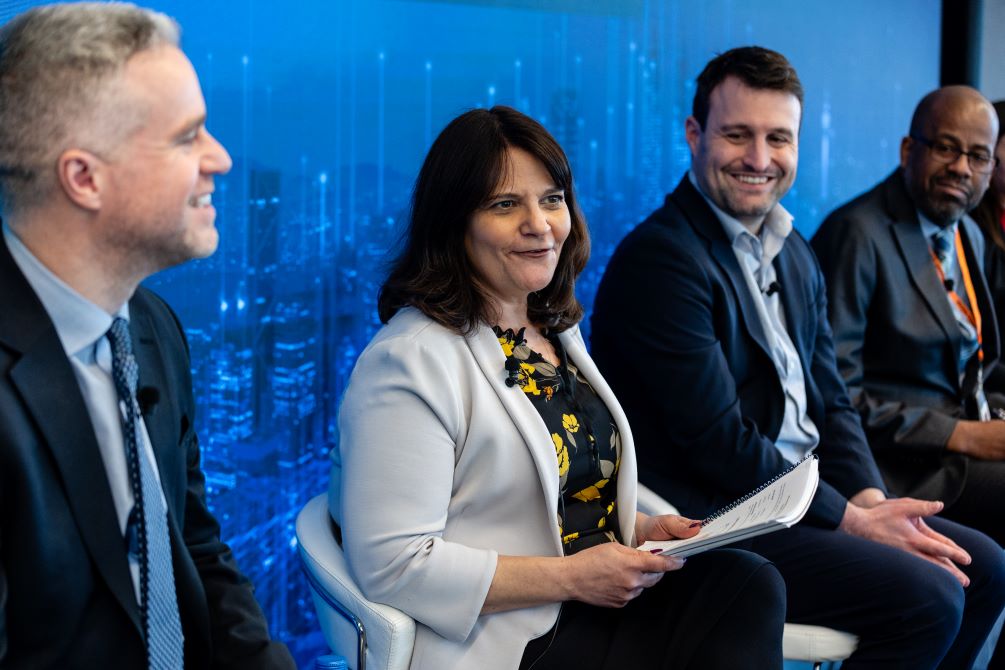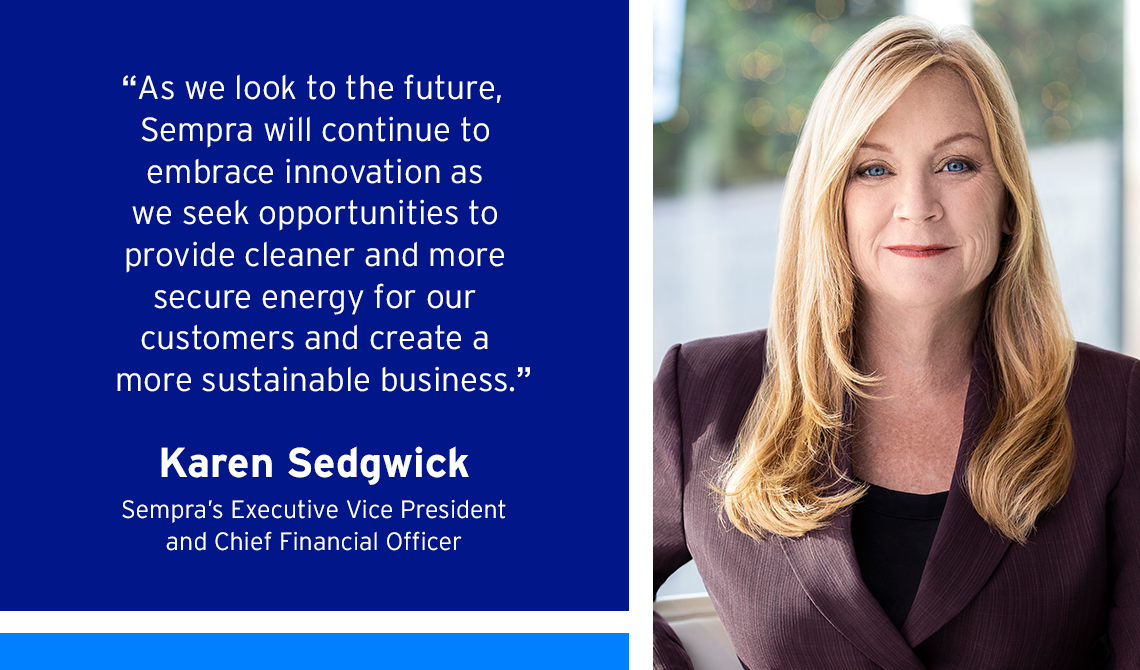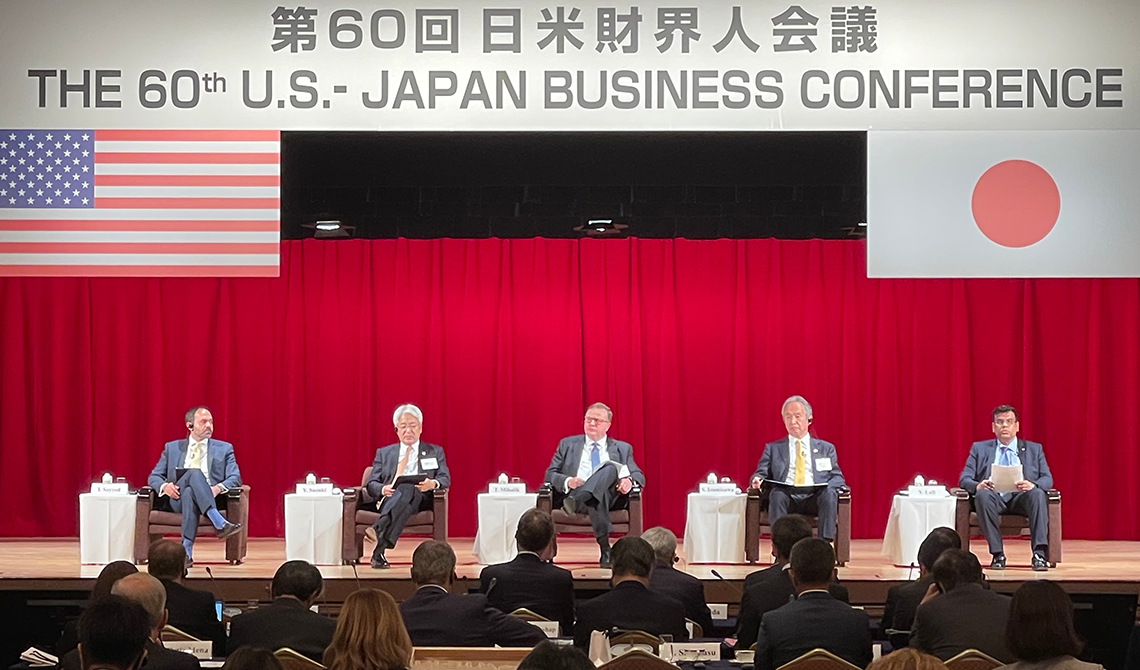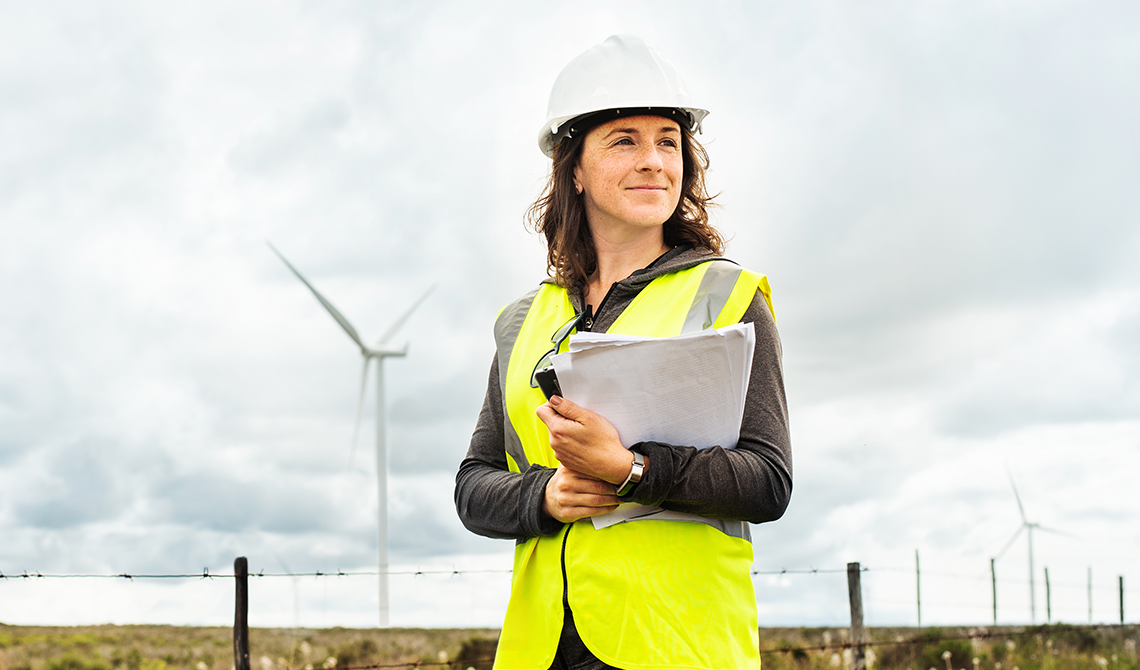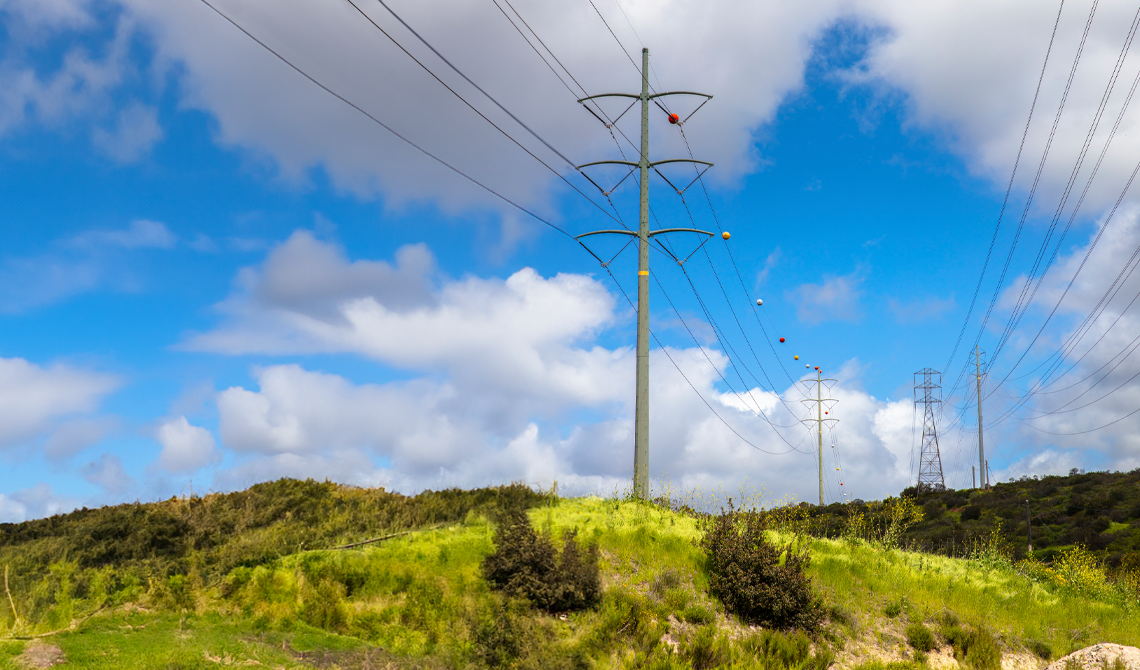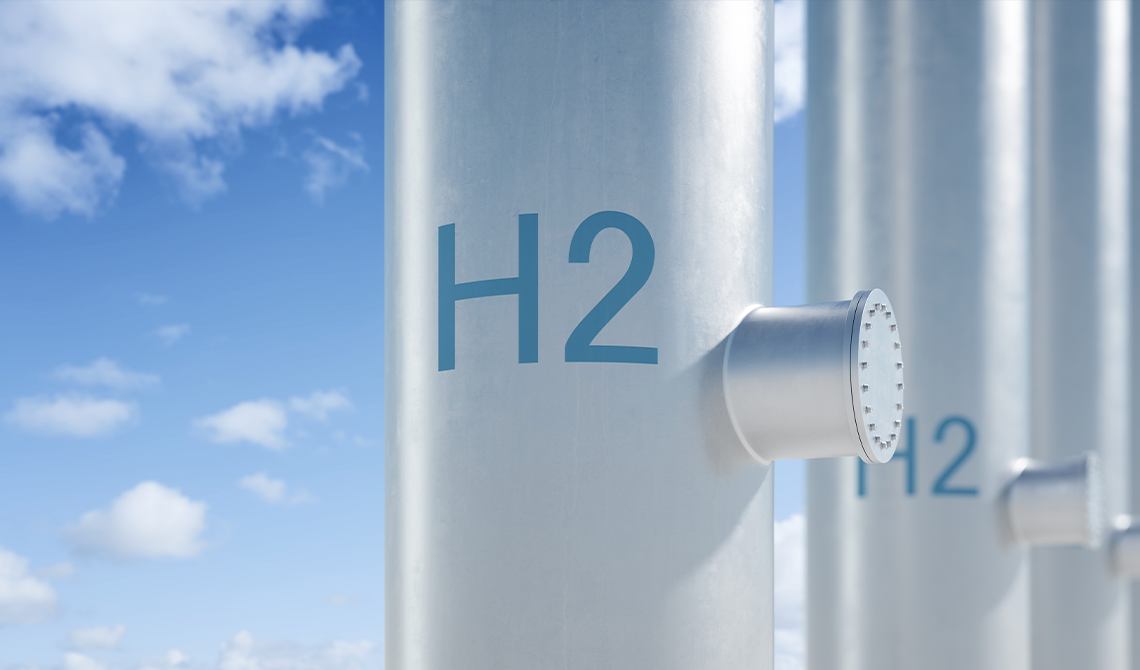Modernizing transmission and distribution infrastructure and connecting them to new sources of energy are needed to help decarbonize economies and build resilience for customers, said Lisa Larroque Alexander, senior vice president of corporate affairs and chief sustainability officer for Sempra.
During a recent interview at the Intercontinental Exchange’s Climate and Capital Conference in New York City, Alexander told an audience of business, environmental and policy leaders that the first step to enabling the energy transition is to have a pragmatic conversation about what is possible and the importance of energy infrastructure.
“We need to go beyond the obvious and really understand energy systems because that’s going to help identify opportunities that others aren’t seeing that relate to enabling the energy transition,” Alexander said. “I think we need to have a functional conversation around the capabilities that our future energy systems need.”
The interview, led by Brian Matt, head of ESG Advisory for the New York Stock Exchange, focused on Sempra’s proactive approach to the evolving energy landscape.
Building resilience, embracing adaptation
Enabling the energy transition requires focus on three key issues, Alexander told Matt and the audience.
“The future of energy demands that we balance on a three-legged stool of decarbonization, resilience and affordability,” she said.
The balance is crucial because of increasing complexity of energy systems along with climate unpredictability, said Alexander.
In fact, in the U.S. alone, severe weather events each costing more than $1 billion have become the norm rather than the exception and they are happening less than every two weeks, according to the National Oceanic and Atmospheric Administration. A separate study by the International Energy Agency found that electric transmission and distribution infrastructure needs to expand by 2 million kilometers (or more than 124 million miles) per year with larger, newer and smarter infrastructure.
Alexander said Sempra is investing in innovations to make energy infrastructure even more agile and resilient to meet these challenges. By focusing on sustainable business practices, Sempra exemplifies an adaptive approach, where its operating companies are continually optimizing their operations to advance resilience and support communities, she said.
For example, Sempra California’s San Diego Gas & Electric (SDG&E) has been active in adding energy storage and microgrids to strengthen resiliency. Another Sempra California operating company, SoCalGas, has been a leading player in hydrogen technology, which plays a role in grid and energy reliability. Sempra Infrastructure, another Sempra operating company, is exploring the development of the Hackberry Carbon Sequestration facility, which is envisioned to capture approximately 2 million tons per annum (Mtpa) of carbon dioxide, with the company’s liquefied natural gas export project serving as the potential anchor customer.
The multiple development projects across Sempra’s operating companies work to tackle the energy transition with the three-pronged approach of decarbonization, resilience and affordability, Alexander said.
Sempra isn’t just passively reacting to changing times or natural disasters, the company is helping to set the pace of the energy transition with innovation and modernization, Alexander said.
“It’s a combination of technologies, both hardware and software, that allow us to better mitigate risk and build more resilient systems amid severe weather,” said Alexander.
Sempra California’s SDG&E is the owner of a privately-owned weather station network, which demonstrates Sempra’s overall commitment to harnessing technology for predictive modeling. This focus on technology not only underscores Sempra and its family of companies’ proactive stance, but also positions the company as a leading innovator that integrates cutting-edge solutions to help shape a more resilient and sustainable energy landscape.
What’s next for Sempra
Private and public financing and incentives — like those borne from the Inflation Reduction Act — are expected to be tailwind for Sempra’s business model.
“It’s going to create more demand and need for more capacity on our systems that in turn creates a significant investment case for us and other utilities in this space,” said Alexander.
Sempra’s focus on three growth platforms — California, Texas and Mexico, which combined represent the third largest GDP market in the world — means there are many robust opportunities for significant infrastructure investments. Sempra companies are currently executing a robust capital plan to help address the growing demand of safe and reliable energy, while enabling the energy transition.
Watch the full interview for more from Alexander.
This article contains statements that constitute forward-looking statements within the meaning of the Private Securities Litigation Reform Act of 1995. Forward-looking statements are based on assumptions with respect to the future, involve risks and uncertainties, and are not guarantees. Future results may differ materially from those expressed or implied in any forward-looking statement. These forward-looking statements represent our estimates and assumptions only as of the date of this article. We assume no obligation to update or revise any forward-looking statement as a result of new information, future events or otherwise.
In this article, forward-looking statements can be identified by words such as “believes,” “expects,” “intends,” “anticipates,” “contemplates,” “plans,” “estimates,” “projects,” “forecasts,” “should,” “could,” “would,” “will,” “confident,” “may,” “can,” “potential,” “possible,” “proposed,” “in process,” “construct,” “develop,” “opportunity,” “initiative,” “target,” “outlook,” “optimistic,” “poised,” “maintain,” “continue,” “progress,” “advance,” “goal,” “aim,” “commit,” or similar expressions, or when we discuss our guidance, priorities, strategy, goals, vision, mission, opportunities, projections, intentions or expectations.
Factors, among others, that could cause actual results and events to differ materially from those expressed or implied in any forward-looking statement include risks and uncertainties relating to: California wildfires, including potential liability for damages regardless of fault and any inability to recover all or a substantial portion of costs from insurance, the wildfire fund established by California Assembly Bill 1054, rates from customers or a combination thereof; decisions, investigations, inquiries, regulations, denials or revocations of permits, consents, approvals or other authorizations, renewals of franchises, and other actions by (i) the California Public Utilities Commission (CPUC), Comisión Reguladora de Energía, U.S. Department of Energy, U.S. Federal Energy Regulatory Commission, Public Utility Commission of Texas, and other governmental and regulatory bodies and (ii) the U.S., Mexico and states, counties, cities and other jurisdictions therein and in other countries where we do business; the success of business development efforts, construction projects and acquisitions and divestitures, including risks in (i) being able to make a final investment decision, (ii) completing construction projects or other transactions on schedule and budget, (iii) realizing anticipated benefits from any of these efforts if completed, and (iv) obtaining the consent or approval of third parties; litigation, arbitrations, property disputes and other proceedings, and changes to laws and regulations, including those related to the energy industry in Mexico; cybersecurity threats, including by state and state-sponsored actors, of ransomware or other attacks on our systems or the systems of third parties with which we conduct business, including the energy grid or other energy infrastructure, all of which have become more pronounced due to recent geopolitical events; our ability to borrow money on favorable terms and meet our obligations, including due to (i) actions by credit rating agencies to downgrade our credit ratings or place those ratings on negative outlook or (ii) rising interest rates and inflation; failure of foreign governments, state-owned entities and our counterparties to honor their contracts and commitments; the impact on affordability of San Diego Gas & Electric Company’s (SDG&E) and Southern California Gas Company’s (SoCalGas) customer rates and their cost of capital and on SDG&E’s, SoCalGas’ and Sempra Infrastructure’s ability to pass through higher costs to customers due to (i) volatility in inflation, interest rates and commodity prices, (ii) with respect to SDG&E’s and SoCalGas’ businesses, the cost of the clean energy transition in California, and (iii) with respect to Sempra Infrastructure’s business, volatility in foreign currency exchange rates; the impact of climate and sustainability policies, laws, rules, regulations, disclosures and trends, including actions to reduce or eliminate reliance on natural gas, increased uncertainty in the political or regulatory environment for California natural gas distribution companies, the risk of nonrecovery for stranded assets, and our ability to incorporate new technologies; weather, natural disasters, pandemics, accidents, equipment failures, explosions, terrorism, information system outages or other events that disrupt our operations, damage our facilities or systems, cause the release of harmful materials or fires or subject us to liability for damages, fines and penalties, some of which may not be recoverable through regulatory mechanisms or insurance or may impact our ability to obtain satisfactory levels of affordable insurance; the availability of electric power, natural gas and natural gas storage capacity, including disruptions caused by failures in the transmission grid, pipeline system or limitations on the withdrawal of natural gas from storage facilities; Oncor Electric Delivery Company LLC’s (Oncor) ability to reduce or eliminate its quarterly dividends due to regulatory and governance requirements and commitments, including by actions of Oncor’s independent directors or a minority member director; changes in tax and trade policies, laws and regulations, including tariffs, revisions to international trade agreements and sanctions, any of which may increase our costs, reduce our competitiveness, impact our ability to do business with certain counterparties, or impair our ability to resolve trade disputes; and other uncertainties, some of which are difficult to predict and beyond our control.
These risks and uncertainties are further discussed in the reports that Sempra has filed with the U.S. Securities and Exchange Commission (SEC). These reports are available through the EDGAR system free-of-charge on the SEC’s website, sec.gov, and on Sempra’s website, sempra.com. Investors should not rely unduly on any forward-looking statements.
Sempra Infrastructure, Sempra Infrastructure Partners, Sempra Texas, Sempra Texas Utilities, Oncor and Infraestructura Energética Nova, S.A.P.I. de C.V. (IEnova) are not the same companies as the California utilities, SDG&E or SoCalGas, and Sempra Infrastructure, Sempra Infrastructure Partners, Sempra Texas, Sempra Texas Utilities, Oncor and IEnova are not regulated by the CPUC.

